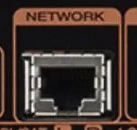Fairly insidiously, Amazon has taken over my house. I now have various iterations of FireTVs connected to each TV, and almost every room has an echo device.
I'm not complaining really, these are great pieces of technology, and voice control is a lot more useful that I would have envisaged a few years ago.
And the FireTV is excellent - easy to use and supports everything I use on a regular basis; Netflix, Kodi, Spotify, Emby Amazon Video and more. However, there's one thing that' been bugging me - it's lack of true bit-streaming of extended sound formats. I use Kodi quite a bit for my media library, and there are many titles in there with fancy surround formats that just don't make it out to my AV system unscathed.
This is only an issue in my Home Cinema which has a full 7.1.4 system that can make best use of such soundtracks (everywhere else is plain old stereo).
I've been reading about the nVidia Shield for a while and finally bought one to see if it could replace the FireTV in this room. Here's how I got on with it...





